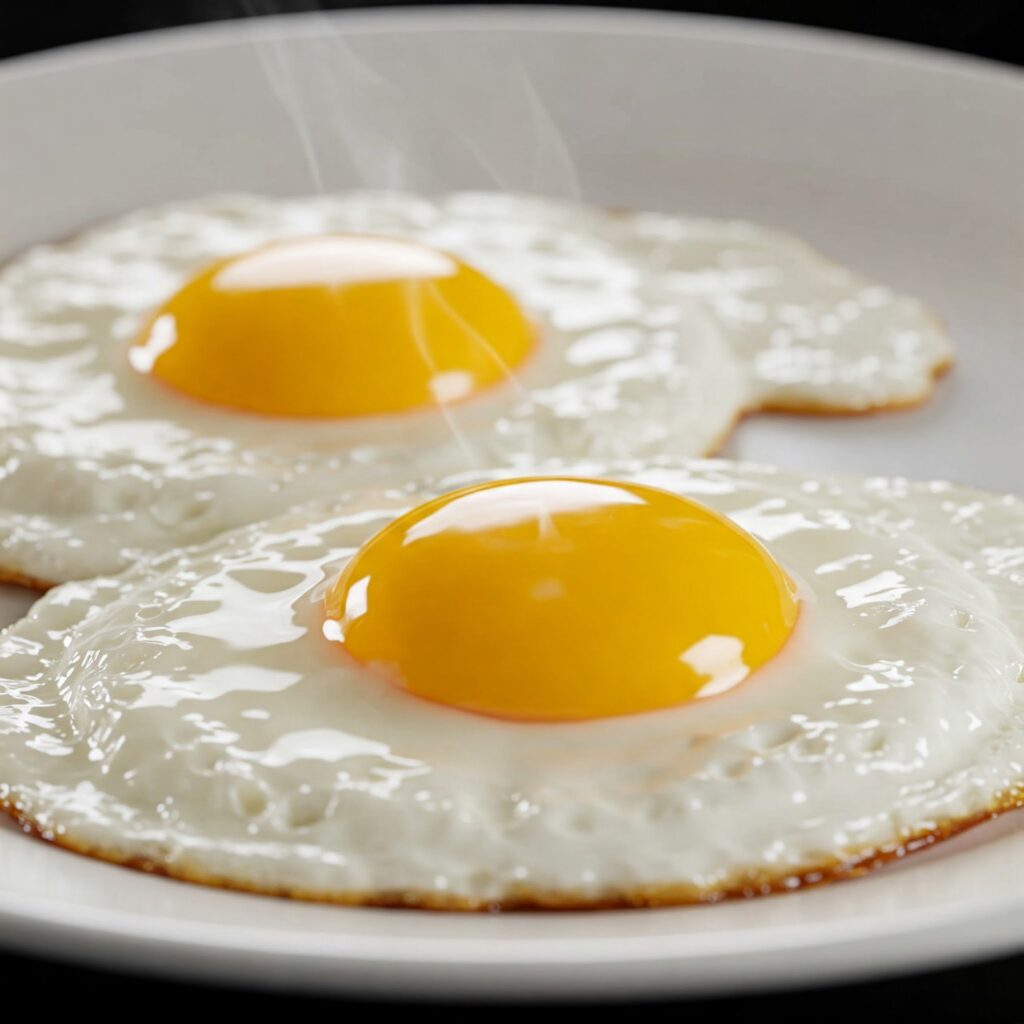Eggs are the cornerstone of countless meals, and how you cook them makes all the difference. From runny yolks to firm whites, egg lovers know there’s a science—and an art—to getting them just right. One style that offers a delicious balance between texture and flavor is the over medium egg. Sitting comfortably between over easy and over hard, over medium eggs deliver the best of both worlds: a slightly set yolk with no raw runniness, and perfectly cooked whites that aren’t rubbery.
In this guide, we’ll crack open everything there is to know about over medium eggs. Whether you’re new to cooking or a breakfast aficionado, mastering this method can elevate your entire meal. We’ll explore what over medium eggs are, how to cook them like a pro, their health benefits, and the best ways to enjoy them. By the end, you’ll be flipping eggs with confidence and flair.
What Are Over Medium Eggs
Over medium eggs are a popular style where the egg is fried on both sides, but the yolk remains only partially cooked. It’s firmer than the yolk in over easy eggs but softer and more runny than in over hard eggs. The name comes from the cooking process—“over” refers to the flipping of the egg, while “medium” describes the degree to which the yolk is cooked.
The result is a creamy, golden center that holds its shape when sliced, ideal for dipping toast or topping a sandwich. The egg whites are fully cooked, giving you a well-formed texture that pairs beautifully with a range of ingredients. This makes over medium eggs a fan-favorite among those who want a bit of run in the yolk, but not too much.
Compared to other styles, over medium eggs are seen as the middle ground. Sunny-side up eggs are never flipped, and the yolk remains fully liquid. Over easy eggs are flipped briefly, keeping the yolk very runny. Over hard eggs are cooked until the yolk is completely firm. The “medium” version offers balance—perfect for those who don’t want egg yolk flooding their plate but still want richness and moisture.
The Step-by-Step Method to Cook Over Medium Eggs
Making over medium eggs requires patience and technique, but with practice, it becomes second nature. Start with fresh eggs—older eggs tend to spread out and cook unevenly. You’ll also need a non-stick skillet or a well-seasoned cast-iron pan, butter or oil, and a spatula.
Begin by heating your skillet on medium-low heat. Add a teaspoon of butter or oil and let it coat the pan evenly. Crack the egg into a small bowl first to ensure the yolk stays intact, then gently pour it onto the skillet. Let it cook undisturbed until the whites are mostly set and the edges begin to curl, about 2-3 minutes. At this point, use your spatula to gently flip the egg.
Cook the second side for an additional 1-2 minutes. Timing is everything here—too short, and the yolk will be too runny; too long, and it will be fully cooked. A gentle press with the spatula can give you a sense of the firmness. With the right timing, you’ll achieve a creamy yolk and fully set whites.
Common mistakes include cooking on too high a heat, which can brown the egg whites before the yolk sets, or using too much oil, which can make the eggs greasy. Keep the heat low and be gentle with your flip. A bit of finesse goes a long way in mastering the over medium egg.
Best Ways to Serve and Enjoy Over Medium Eggs
Over medium eggs are versatile and can upgrade nearly any meal. Their semi-cooked yolks provide a creamy texture that complements everything from toast to rice bowls. One of the most classic ways to enjoy them is with a side of crispy bacon and buttered toast—use the yolk like a rich dipping sauce.
They also make a perfect topping for breakfast sandwiches, especially when layered with avocado, tomato, or cheese. The semi-runny yolk adds flavor without making the sandwich soggy. In grain bowls or salads, over medium eggs contribute protein and depth. You can even add them to ramen or stir-fries for an added layer of richness.
For a more indulgent meal, consider placing over medium eggs on top of a burger or steak. The slightly runny yolk enhances the dish without overpowering it. And let’s not forget eggs benedict variations—over medium eggs can be a delightful stand-in for poached eggs, especially if poaching isn’t your thing.
Whether you’re following a keto diet, a high-protein meal plan, or just trying to eat whole foods, over medium eggs offer a satisfying and delicious option. With their balance of taste, texture, and versatility, they’re hard to beat.
Nutrition and Health Benefits of Over Medium Eggs

Eggs, including over medium eggs, are nutrient powerhouses. A single large egg has about 70 calories, 6 grams of protein, and a wide range of essential vitamins and minerals. You’ll find vitamins A, D, E, B12, and minerals like iron, selenium, and phosphorus. The yolk also contains choline, important for brain health and liver function.
Cooking eggs over medium retains many of these nutrients, especially compared to high-heat or overcooked methods. The gently cooked yolk preserves fat-soluble vitamins and healthy fats, while the cooked whites provide easily digestible protein.
Concerned about cholesterol? Research shows that for most people, dietary cholesterol in eggs doesn’t significantly affect blood cholesterol levels. In fact, eggs can help increase levels of HDL, the “good” cholesterol.
Over medium eggs can be a healthy choice as long as they’re cooked with minimal oil or butter. For added nutritional value, pair them with whole grains, veggies, or healthy fats like avocado. Choosing pasture-raised or organic eggs can also improve nutritional content, as these eggs often contain higher omega-3 fatty acids and vitamin D.
Conclusion
Over medium eggs are more than just a breakfast staple—they’re a culinary canvas. With their perfect balance between runny and firm, they’re ideal for everything from gourmet brunches to quick weekday meals. Mastering the technique is simple once you get the hang of heat control and timing.
Whether you’re looking for something nutritious, versatile, or just plain delicious, over medium eggs check all the boxes. They’re easy to make, endlessly customizable, and full of flavor. So next time you’re in the kitchen, flip with confidence—your perfect egg awaits.
FAQs
Q1: How long should I cook each side of an over medium egg?
A: Typically, cook the first side for 2-3 minutes until the whites are mostly set, then flip and cook the second side for 1-2 minutes.
Q2: Can I make over medium eggs without flipping them?
A: Not really—flipping is essential to cook the yolk to that perfect “medium” doneness.
Q3: What’s the difference between over easy and over medium eggs?
A: Over easy eggs have a runnier yolk, while over medium eggs have a more set, semi-cooked yolk.
Q4: Are over medium eggs safe to eat for everyone?
A: Yes, but individuals with compromised immune systems should ensure the yolk is adequately cooked.
Q5: Can I make over medium eggs in the microwave or air fryer?
A: While possible, stovetop cooking offers the best texture and control for over medium eggs.





